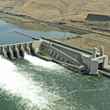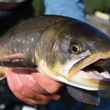G. Loomis recently announced the addition of a new series of rods to its celebrated NRX+ family. Dubbed the NRX+ T2S, the five new additions are all 8'10" in length and are aimed at what G. Loomis calls "apex saltwater anglers." If you're not sure what an apex saltwater angler is, that's okay. What you can be sure of is that when Steve Rajeff and the folks at G. Loomis introduce a new rod, it's always worth paying attention—especially when the rod in question has the letters "NRX" in the name.
G. Loomis introduces new NRX+ T2S fly rods
by Hatch Magazine - Tuesday, Jul 20th, 2021





























